| Vaalserberg | |
|---|---|
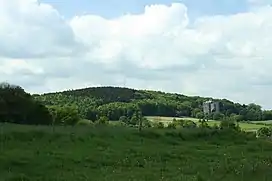 The Vaalserberg seen from Aachen | |
| Highest point | |
| Elevation | 322.4 m (1,058 ft)NAP |
| Coordinates | 50°45′17″N 6°01′15″E / 50.75472°N 6.02083°E |
| Naming | |
| English translation | Vaals' Mountain |
| Language of name | English |
| Geography | |
 Vaalserberg Location in the Netherlands 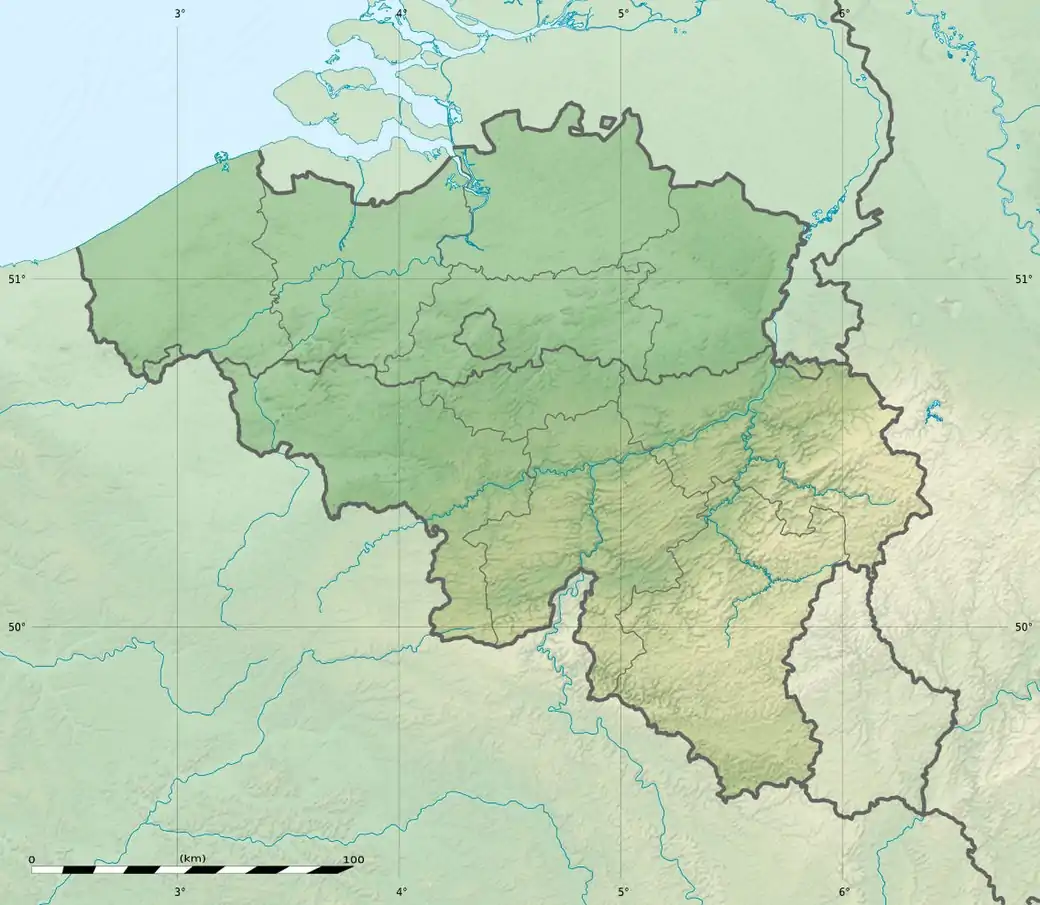 Vaalserberg Location in Belgium  Vaalserberg Location in North Rhine-Westphalia (Germany) | |
| Location | Limburg, Netherlands |
The Vaalserberg (Dutch pronunciation: [ˈvaːlsərˌbɛr(ə)x]) is a hill with a height of 322.4 metres (1,058 ft)[1] above NAP and is the highest point in the European part of the Netherlands. The Vaalserberg is located in the province of Limburg, at the south-easternmost edge of the country, near the town of Vaals (after which it is named).
The Vaalserberg was the highest point anywhere in the Netherlands until the Caribbean island of Saba, with its 887 m (2,910 ft) high volcano, was incorporated into the country as a "special municipality" in 2010.
Three-country point
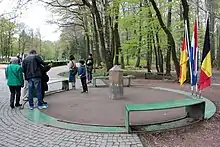

The Vaalserberg is also the location of the tripoint between Germany, Belgium and the Netherlands and so its summit is called the Drielandenpunt ("three country point") in Dutch, Dreiländereck ("three country corner") in German and Trois Frontières ("three borders") or Trois Bornes ("three border stones") in French.
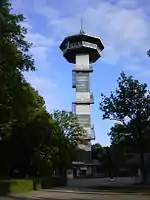
On the Belgian side, the tripoint borders the region of Wallonia, including both the regular French-speaking area and the smaller German-speaking area. The German side falls within the city limits of Aachen in the state of North Rhine-Westphalia. Between 1830 and 1919, the summit was a quadripoint, also bordering Neutral Moresnet, which is now part of Belgium's German-speaking area.
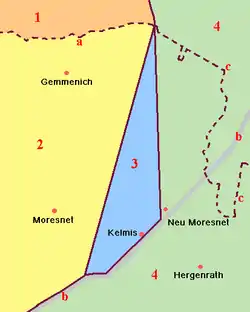
Legend:

The current Belgian-German border is not the same as the former eastern border of Moresnet with Prussia but is a little more to the east. Therefore, five different borders came together at this point but never more than four at one time, except possibly between 1917 and 1920, when the border situation was unclear and disputed.
The border intersection has made the Vaalserberg a well-known tourist attraction in the Netherlands, with a 50 metres (160 ft) tower on the Belgian side (Dutch: Boudewijntoren; French: Tour Baudouin; German: Balduin-Turm), opened in 1994 to replace the previous 33 metres (108 ft) tower, built in 1970. It offers a grand panorama of the surrounding landscape.
140 metres (460 ft) south of the point, a railway crosses the German-Belgian border in the Gemmenicher Tunnel. It is the freight-only railway between Tongeren and Aachen.
Four-borders road
The road leading up to this point on the Dutch side is called the Viergrenzenweg ("four borders way"), probably because of the former territory of Neutral Moresnet. The names of the roads in Belgium (Route des Trois Bornes) and Germany (Dreiländerweg) refer to the present three bordering countries.[2]
Along the road on the Dutch side is the 35 metres (115 ft) Wilhelminatoren observation tower, with a restaurant and forest trails. The present tower officially opened on 7 October 2011 and features a lift and a glass floor. The first tower at the site was built in 1905 during the reign of its namesake, Queen Wilhelmina of the Netherlands, and was demolished in 1945. The second 20 metres (66 ft) tower opened on 11 August 1951 and was demolished over the winter of 2010–2011 because of its poor condition and high maintenance requirements.
Road cycling
The Vaalserberg is often used in the Amstel Gold Race and is climbed halfway through the race. The climb is named in the roadbook of the Gold Race as Drielandenpunt and is followed by the Gemmenich climb.
See also
References
- ↑ (in Dutch) J.A. te Pas, Nederland van laag tot hoog, NGT Geodesia 1987 nr. 7/8 pp. 273-275
- ↑ See Google Maps showing street names
'Tim Travel': Holland's highest mountain (& the strange story of Neutral-Moresnet) (YouTube)